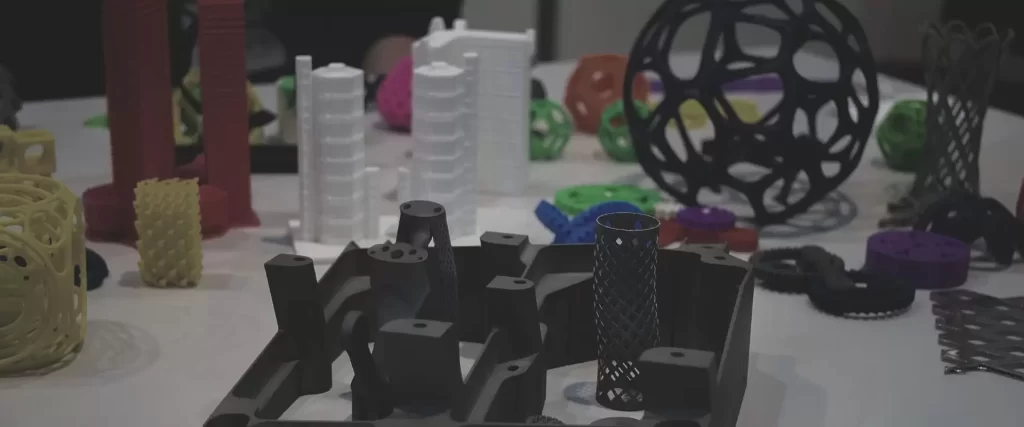Table of Contents:
- Introduction to Selective Laser Sintering (SLS) 3D Printing
- The SLS 3D Printing Process
- Materials Used in SLS 3D Printing
- Advantages and Disadvantages of SLS 3D Printing
- Applications of SLS 3D Printing
- Comparison with Other 3D Printing Technologies
- Future of SLS 3D Printing
- Conclusion
-
1.Introduction to Selective Laser Sintering (SLS) 3D Printing
Selective Laser Sintering (SLS) 3D Printing is a type of additive manufacturing technology that utilizes a high-powered laser to selectively sinter powdered material, typically polymers, metals, or ceramics, layer by layer to form a three-dimensional object. This process is also sometimes referred to as Powder Bed Fusion (PBF) or Powder Bed Additive Manufacturing (AM).
The main advantage of SLS 3D Printing over other 3D printing technologies is its ability to produce complex geometries without the need for support structures. This allows for greater design freedom and flexibility, making it an ideal choice for producing highly customized or intricate parts.
-
2.The SLS 3D Printing Process
The SLS 3D printing process begins with the preparation of a powdered material bed. The material is spread evenly over the build platform, which is then heated to just below the melting point of the material.
A high-powered laser is then used to selectively sinter the powder, causing it to fuse together and form the first layer of the object. The build platform then drops down by one layer thickness, and the process is repeated until the entire object is complete.
Once the printing is complete, the object is left to cool down before it can be removed from the build platform. The unused powder is then recycled for future use.
-
3.Materials Used in SLS 3D Printing
SLS 3D Printing is capable of printing with a wide range of materials, including polymers, metals, and ceramics. Polymers are the most commonly used material in SLS 3D Printing due to their lower cost and easier processability. Some popular polymer materials used in SLS 3D Printing include Nylon, TPU, and PP.
Metals can also be used in SLS 3D Printing, although they typically require higher laser power and more precise temperature control. Some popular metal materials used in SLS 3D Printing include stainless steel, titanium, and aluminum.
Ceramics are also a popular material for SLS 3D Printing due to their high strength and resistance to high temperatures. Some popular ceramic materials used in SLS 3D Printing include zirconia, alumina, and silicon carbide.
-
4.Advantages and Disadvantages of SLS 3D Printing
A. Advantages
- High accuracy and precision
- Ability to produce complex geometries without the need for support structures
- Wide range of printable materials
- High strength and durability of printed parts
B. Disadvantages
- High cost of equipment and materials
- Limited resolution and surface finish compared to other 3D printing technologies
- Slow printing speed compared to other 3D printing technologies
-
5.Applications of SLS 3D Printing
SLS 3D Printing has a wide range of applications in various industries, including:
A. Aerospace and Defense: SLS 3D Printing is used to produce lightweight, high-strength parts for use in aircraft, satellites, and military equipment.
B. Medical: SLS 3D Printing is used to produce customized medical implants, prosthetics, and surgical tools.
C. Automotive: SLS 3D Printing is used to produce lightweight, high-strength parts for use in cars and other vehicles.
D. Consumer Goods: SLS 3D Printing is used to produce high-quality, customized consumer products, such as jewelry, phone cases, and toys.
-
6.Comparison with Other 3D Printing Technologies
A. Fused Deposition Modeling (FDM): FDM is a 3D printing technology that uses a melted filament to build objects layer by layer. While FDM is cheaper and faster than SLS 3D Printing, it is limited in the types of materials it can print with and the level of detail it can achieve.
B. Stereolithography (SLA): SLA is a 3D printing technology that uses a liquid resin that is cured by a UV laser to build objects layer by layer. SLA can achieve high levels of detail and surface finish, but it is limited in the types of materials it can print with and the size of the build volume.
-
7.Future of SLS 3D Printing
As the demand for customized and complex parts increases across various industries, the future of SLS 3D Printing looks bright. Improvements in materials science and laser technology are expected to increase the range of materials that can be printed and improve the accuracy and speed of the printing process. SLS 3D Printing is also expected to become more affordable as the technology becomes more widespread.
If you need about Selective Laser Sintering (SLS) 3D Printing Services,You can click on the V1 Prototype website to find it.
-
8.Conclusion
Selective Laser Sintering (SLS) 3D Printing is a powerful technology with a wide range of applications in various industries. With its ability to produce complex geometries without the need for support structures and its wide range of printable materials, SLS 3D Printing is a technology that is poised to revolutionize manufacturing in the years to come. While it does have some limitations, the advantages of SLS 3D Printing far outweigh its disadvantages, and it is sure to play an increasingly important role in the future of manufacturing.




